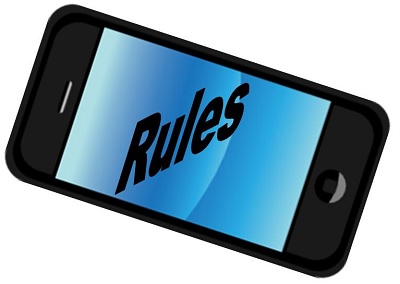Barnes & Noble’s smartphone friendly site does everything wrong but has managed to get it right.
Even though Barnes & Noble has done virtually everything wrong when it comes to the typically accepted guidelines for ensuring success in mobile commerce, the smartphone friendly site still seems to be bringing in a comfortably high success rate.
The m-commerce website has a heavy page weight, it loads slowly, and it contains far too many page elements.
The mobile commerce site for the number 41 company in the Internet Retailer Mobile 500 essentially breaks all of the rules when it comes to the recommendations that have been made by Keynote, a highly respected firm in this area. And yet, despite its failing to use the best practices for its overall page construction and for its performance, it is doing quite well. According to Keynote’s Matthew Agnoli, “The Barnes & Noble mobile home page is more than twice as slow as any of the other top five sites, as well as more than double the amount of content and is much larger in size.”
Still, the site still ranked as number 5 on the Keynote Mobile Commerce Performance Index.
 This was for the week that ended on July 13. According to Agnoli, the one strong point of the m-commerce site that raised it above many others was that it held to a tremendous success rate, which was 99.35 percent. For that week, the average success rate for all of the sites on the index had been 97.96 percent, so clearly Barnes & Noble’s website performed notably better.
This was for the week that ended on July 13. According to Agnoli, the one strong point of the m-commerce site that raised it above many others was that it held to a tremendous success rate, which was 99.35 percent. For that week, the average success rate for all of the sites on the index had been 97.96 percent, so clearly Barnes & Noble’s website performed notably better.
That said, success rate enough may not be adequate for the site to be able to hold its position among the top 5 on the list. If other sites manage to bring their own success rates higher, then Barnes & Noble could find its rank plummeting rather quickly. Agnoli pointed out that “A site needs to be both reliable and fast to ensure high customer satisfaction and to keep customers returning.”
Agnoli recommended that the Barnes & Noble mobile commerce site make a number of changes in order to improve the site’s performance and speed it up, to make it much more appealing to consumers.
Applications are beginning to lose out to mobile sites when it comes to consumer shopping behaviors.
According to some of the latest statistics that were presented in a report on a recent study, consumers are now visiting m-commerce websites more frequently than apps, though they are more likely to make an actual purchase using the application.
This suggests that brands hoping for the greatest mobile shopping success may need to focus on both channels.
This also suggests that the previously recommended decision for brands to place all of their concentration on mobile app development in order to succeed in m-commerce may no longer be the ideal path. This is because the majority of smartphone users would prefer to interact with stores on their devices using websites and not applications. This is particularly true when it comes to informing themselves about the brand, store, shop locations, and products, for example.
The study looked into the way that consumers use m-commerce in order to interact with brands.
It was conducted by ICM Research, which surveyed more than 1,300 smartphone owners. It asked them about their interaction with a rather limited sample of 13 different retailers, over their smartphones. Across 12 of those 13 retailers, the websites were the most commonly used mobile shopping option. The only exception, the last of those retailers, was eBay, where the app received the largest amount of traffic.
The company that experienced the smallest number of mobile app users was Boots. Only 8 percent of the smartphone users who interacted with that brand and took part in the study did so by way of the app. Comparatively, 65 percent of them used the mobile website for this purpose. The retailer, Next, known for its fashions, experienced the second lowest use of its app – 11 percent – when compared to the interactions over its mobile website – 62 percent.
On the other hand, eBay’s m-commerce app was used by 52 percent of the respondents, whereas 35 percent of the respondents said that they interacted with that brand over their mobile browsers. Jamie Belnikoff, associate director at ICM Research, pointed out that the degree to which consumers seemed to prefer websites to apps surprised him.
 This was for the week that ended on July 13. According to Agnoli, the one strong point of the m-commerce site that raised it above many others was that it held to a tremendous success rate, which was 99.35 percent. For that week, the average success rate for all of the sites on the index had been 97.96 percent, so clearly Barnes & Noble’s website performed notably better.
This was for the week that ended on July 13. According to Agnoli, the one strong point of the m-commerce site that raised it above many others was that it held to a tremendous success rate, which was 99.35 percent. For that week, the average success rate for all of the sites on the index had been 97.96 percent, so clearly Barnes & Noble’s website performed notably better.

